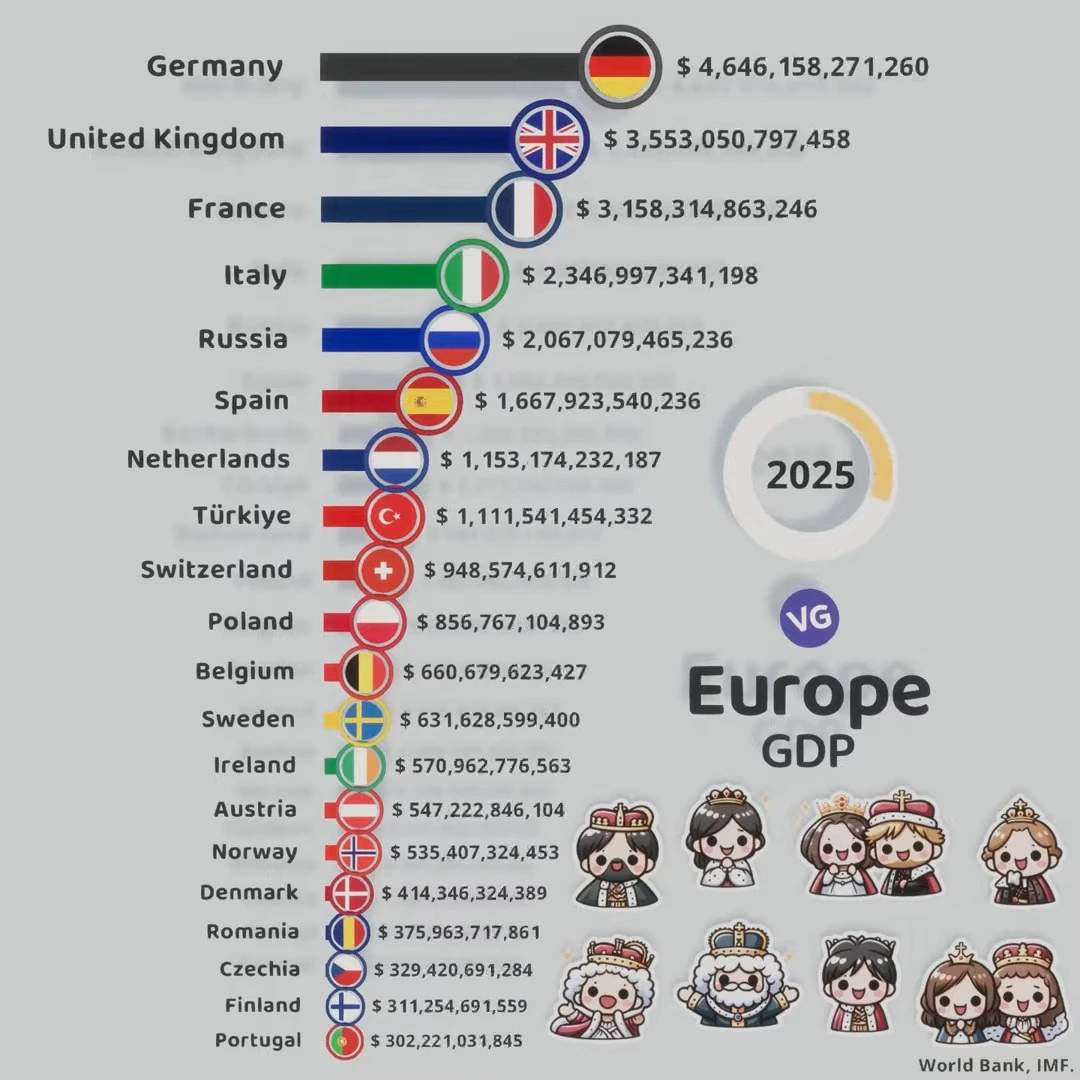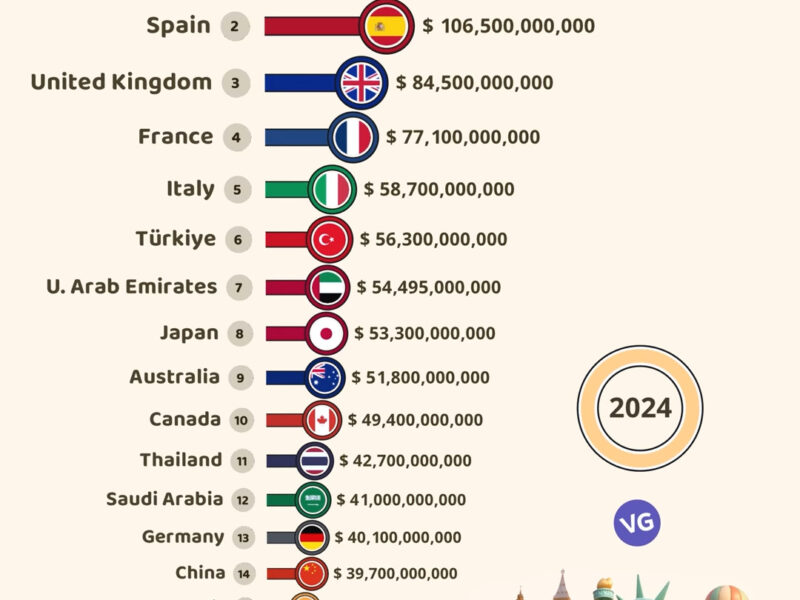Data Source: World Bank, IMF
The Economic Powerhouses
According to the 2025 GDP projections, Germany maintains its position as Europe’s economic powerhouse with a GDP of approximately $4.65 trillion, significantly ahead of its closest competitors. The United Kingdom follows with $3.55 trillion, and France rounds out the top three with $3.16 trillion. This trio of nations continues to drive much of Europe’s economic activity.
Top 20 Largest European Economies (GDP – 2025)
| Rank | Country | GDP (USD) |
|---|---|---|
| 1️⃣ | 🇩🇪 Germany | $4.65T |
| 2️⃣ | 🇬🇧 United Kingdom | $3.55T |
| 3️⃣ | 🇫🇷 France | $3.16T |
| 4️⃣ | 🇮🇹 Italy | $2.35T |
| 5️⃣ | 🇷🇺 Russia | $2.07T |
| 6️⃣ | 🇪🇸 Spain | $1.67T |
| 7️⃣ | 🇳🇱 Netherlands | $1.15T |
| 8️⃣ | 🇹🇷 Türkiye | $1.11T |
| 9️⃣ | 🇨🇭 Switzerland | $948.57B |
| 🔟 | 🇵🇱 Poland | $856.77B |
| 11️⃣ | 🇧🇪 Belgium | $660.68B |
| 12️⃣ | 🇸🇪 Sweden | $631.63B |
| 13️⃣ | 🇮🇪 Ireland | $570.96B |
| 14️⃣ | 🇦🇹 Austria | $547.22B |
| 15️⃣ | 🇳🇴 Norway | $535.41B |
| 16️⃣ | 🇩🇰 Denmark | $414.36B |
| 17️⃣ | 🇷🇴 Romania | $375.96B |
| 18️⃣ | 🇨🇿 Czechia | $329.42B |
| 19️⃣ | 🇫🇮 Finland | $311.25B |
| 20️⃣ | 🇵🇹 Portugal | $302.22B |
Major Regional Players
Italy holds the fourth position with $2.35 trillion, followed by Russia at $2.07 trillion and Spain at $1.67 trillion. These figures demonstrate the substantial economic weight of Southern and Eastern Europe’s largest economies. The Netherlands and Türkiye follow with GDPs of $1.15 trillion and $1.11 trillion respectively, highlighting their significant roles in regional trade and commerce.
Mid-Sized Economic Powers
Switzerland leads the mid-sized economies with $949 billion, followed by Poland ($857 billion) and Belgium ($661 billion). These nations represent important industrial and financial centers, contributing significantly to European economic integration and trade.
Nordic and Central European Economies
The Nordic region shows strong economic performance, with Sweden ($632 billion), Norway ($535 billion), and Denmark ($414 billion) all maintaining robust economies despite their relatively smaller populations. Meanwhile, Central European nations like Austria ($547 billion), Romania ($376 billion), and Czechia ($329 billion) demonstrate the growing economic strength of this region.
Economic Distribution Patterns
The data reveals several interesting patterns:
- A clear North-South economic divide
- The continuing dominance of Western European economies
- The significant economic weight of EU member states
- The varied economic scales of Nordic countries
- The emerging strength of Central and Eastern European economies
Understanding these economic patterns is crucial for:
- Investment decisions in European markets
- Policy development for economic integration
- Cross-border business strategies
- Regional development initiatives
Looking Forward
These projections suggest continued economic stability and growth across Europe, though with notable disparities between regions. The data indicates that while traditional economic powers maintain their leadership positions, several emerging economies are steadily gaining economic significance.
Source: Based on projections from the World Bank and International Monetary Fund (IMF), 2025 forecast



